Retail design is an essential aspect of creating a successful retail space that attracts customers and encourages them to make purchases. With endless possibilities for designing your retail space, it's important to know the best practices that can maximize your sales and create a positive shopping experience. In this article, we will explore the basics of retail design and provide tips and trends to help you create an effective retail interior that captivates customers and drives sales.
What is Retail Design?
Retail design encompasses how you organize and design your retail space to welcome and guide customers. It goes beyond just merchandising products and covers every element of your store, from the entrance to the checkout display. Every detail, from the layout to the lighting and signage, can impact your customer's path to purchase. With strategic retail interior design decisions, you can create an immersive and enticing shopping experience.
The Six Basic Store Layout Designs
Most retail brands tend to lean towards one of the following basic designs for their store layout:
- Forced-path
- Grid
- Free-flow
- Angular
- Loop
- Diagonal
Understanding these layout designs can help you make informed decisions when planning your retail space.
Retail Design Tips
To create an effective retail interior that attracts customers and encourages them to make purchases, follow these tips:
Use Color Wisely
Color plays a significant role in creating a positive shopping experience. Thoughtfully incorporate color into your retail design, considering the psychology of colors. For example, black communicates authority and classiness, while red grabs attention and encourages impulse purchases. Blue evokes calmness, security, and trust. Strike a balance between vibrant and overwhelming colors to create a visually appealing and comfortable shopping environment.
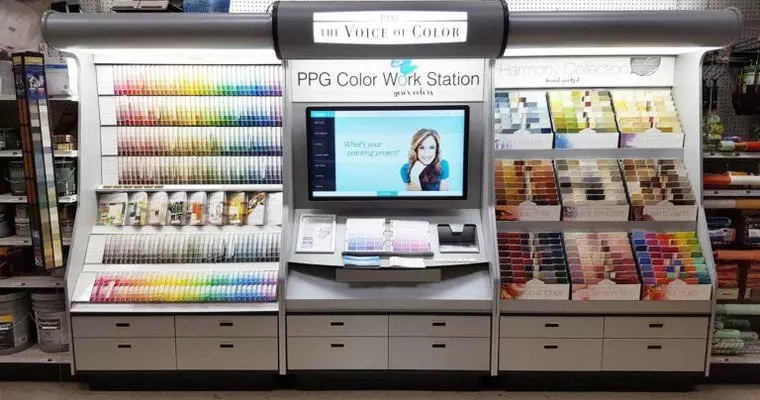 Caption: Lighted clothing racks
Caption: Lighted clothing racks
Update Product Displays Regularly
Product displays, also known as visual merchandising, are proven to increase sales. Regularly update your displays to showcase new products and create interactive shopping experiences. Engaging displays not only catch the customer's attention but also encourage them to share photos of your store on social media. Window displays, checkout displays, and mannequins are common types of displays that can enhance the overall shopping experience.
Pay Attention to the Threshold Area
The threshold area, also known as the "decompression zone," is the first space customers encounter when they enter your store. Make this space welcoming and visually appealing, easing customers into your store experience. Avoid overwhelming them with too much information or products in this area. Consider placing helpful signage slightly inside your store or right outside the entrance to guide customers further into your retail space.
Create an Engaging Power Wall
The first wall customers see after entering your store is often referred to as a "power wall." This space presents an opportunity to make a strong first impression and capture your customer's attention. Choose products that tell a story or are high-profit or high-demand to display on this wall. Invest in eye-catching and attention-grabbing displays that highlight your best offerings.
Design a Clear Shopping Path
Guide your customers through your store with a clear and well-thought-out shopping path. Utilize furniture, displays, racks, and other tools to create a natural flow that encourages customers to browse your products. Consider a counterclockwise path to guide customers to the rear of the store and then back to the front. Differentiate the path with a different texture or flooring material to draw attention and guide customers along the desired route.
Slow Customers Down with Speed Bumps
To prevent customers from rushing through your store and overlooking products, create breaks or "speed bumps" that force them to pause and engage with your displays. Merchandise outposts and special displays near the end of aisles can encourage impulse purchases. Group products strategically, placing higher-demand items at eye level and keeping lower-grossing products at the bottom or above eye level.
Create a Comfortable Shopping Experience
Ensure your store provides a comfortable shopping experience by considering customer comfort and personal space. Avoid overcrowding aisles or displays to prevent the "butt-brush effect" and give customers enough personal space. Incorporate a waiting area with comfortable seating to accommodate customers and their companions who may not be actively shopping but are waiting. Face your seating area towards your merchandise to keep products top of mind.
Strategically Position Your Checkout Counter
The location of your checkout counter is crucial in your retail design. Ideally, place it at a natural stopping point in the shopping experience, such as the front left area of your store. Consider the layout and size of your store to determine the most convenient and logical position for the checkout counter. Make sure your counter is big enough for shoppers to place their belongings and use the wall behind it for engaging displays. Encourage impulse purchases by stocking desirable items close to the checkout counter.
Retail Interior Design Trends
In addition to the essential retail design tips, here are some emerging trends to consider when designing your retail space:
Interactive Retail Experiences
Create interactive experiences that engage customers and keep them in your store longer. Incorporate digital technology, such as touchscreens or augmented reality displays, to provide unique and immersive shopping experiences. Allow customers to look up product information, discover complementary products, or customize their purchases. Interactive retail experiences enhance customer satisfaction and encourage repeat visits.
 Caption: PPG Color Work Station
Caption: PPG Color Work Station
Modernized Mobile Checkout
Mobile point-of-sale (POS) systems and card readers enable you to modernize your checkout experience. By offering mobile checkout options, you can provide a seamless and convenient payment process throughout your store. Embrace technologies like Apple Pay or digital gift cards while ensuring a user-friendly and efficient checkout experience. Evaluate how a modernized checkout counter can improve your customer's overall perception of your brand.
Content Creation Studios
Utilize your store space as a content creation studio, allowing customers and influencers to stage and capture content for social media. Create visually appealing displays and interactive areas within your store that encourage customers to take photos and share their shopping experiences. Authentic user-generated content can enhance brand exposure and attract new customers.
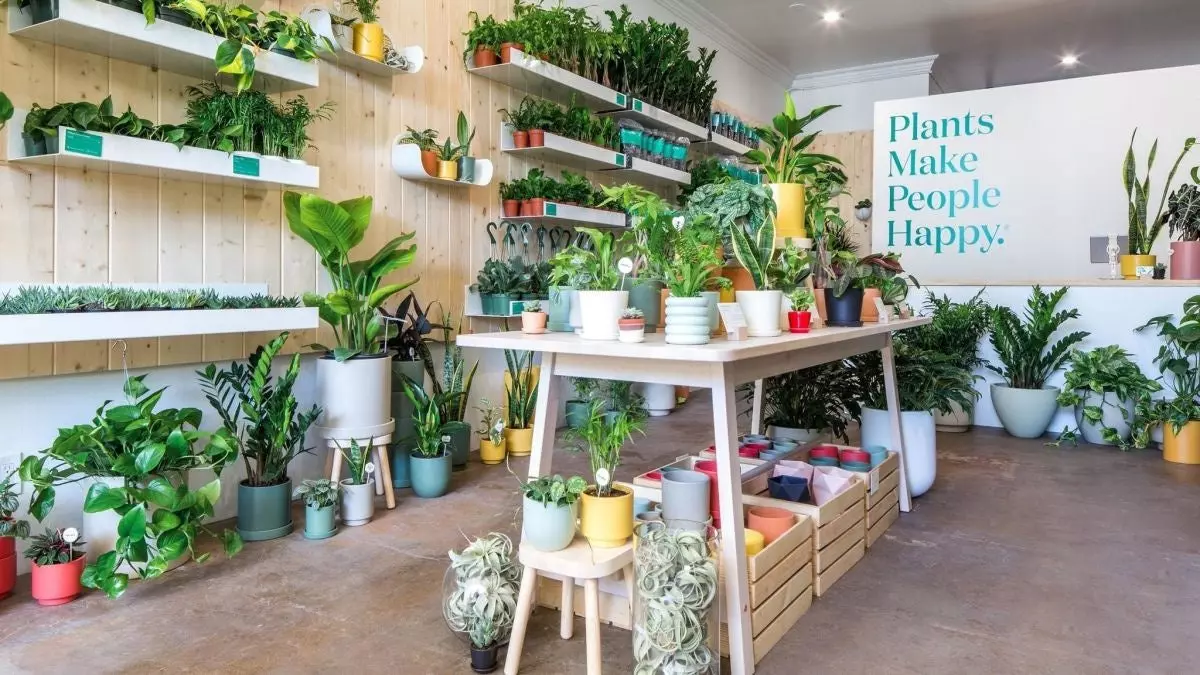 Caption: Plants in store
Caption: Plants in store
Incorporate Elements of the Local Community
Showcase your connection to the local community by curating locally sourced items or collaborating with local artisans. This not only highlights unique products but also fosters a sense of community for your customers. Incorporating elements of the local community in your retail design adds a personal touch and resonates with shoppers.
Embrace Minimalistic Merchandising
Consider adopting a minimalistic approach to merchandising by focusing on impactful displays rather than overwhelming customers with too many products. Highlight one or two key products or themes to create visually compelling displays that attract attention. A minimalistic retail design can provide a clean and uncluttered shopping experience, allowing customers to focus on the products that matter most.
Harness the Power of Natural Lighting
Natural lighting has a positive impact on buyer behavior and the overall shopping experience. Utilize windows and remove any obstructions that block natural light from entering your store. Place your checkout counter near the front of the store to ensure customers experience the natural light during their journey. Natural lighting creates a warm and inviting atmosphere while showcasing your products in their true colors.
Optimize Space with Smaller Physical Stores
Consider downsizing your physical store to provide a more curated selection of products. Smaller retail spaces can create a sense of exclusivity and make it easier for customers to make purchasing decisions. A smaller store requires effective inventory management and restocking processes to ensure products are readily available. Additionally, offer "endless aisles" where customers can browse additional products online and have them shipped directly to their homes.
Creative Retail Interiors
Here are three examples of creative retail interiors that embody effective retail design:
The Sill
The Sill, a plant delivery company, has physical store locations designed to make customers feel confident in their ability to care for plants. The bright and airy atmosphere of The Sill's stores creates an immersive experience where customers can explore greenhouse-esque aisles. The store design is focused on guiding plant beginners and experts alike, featuring additional shelves, signage, and decor that enhance the overall ambiance.
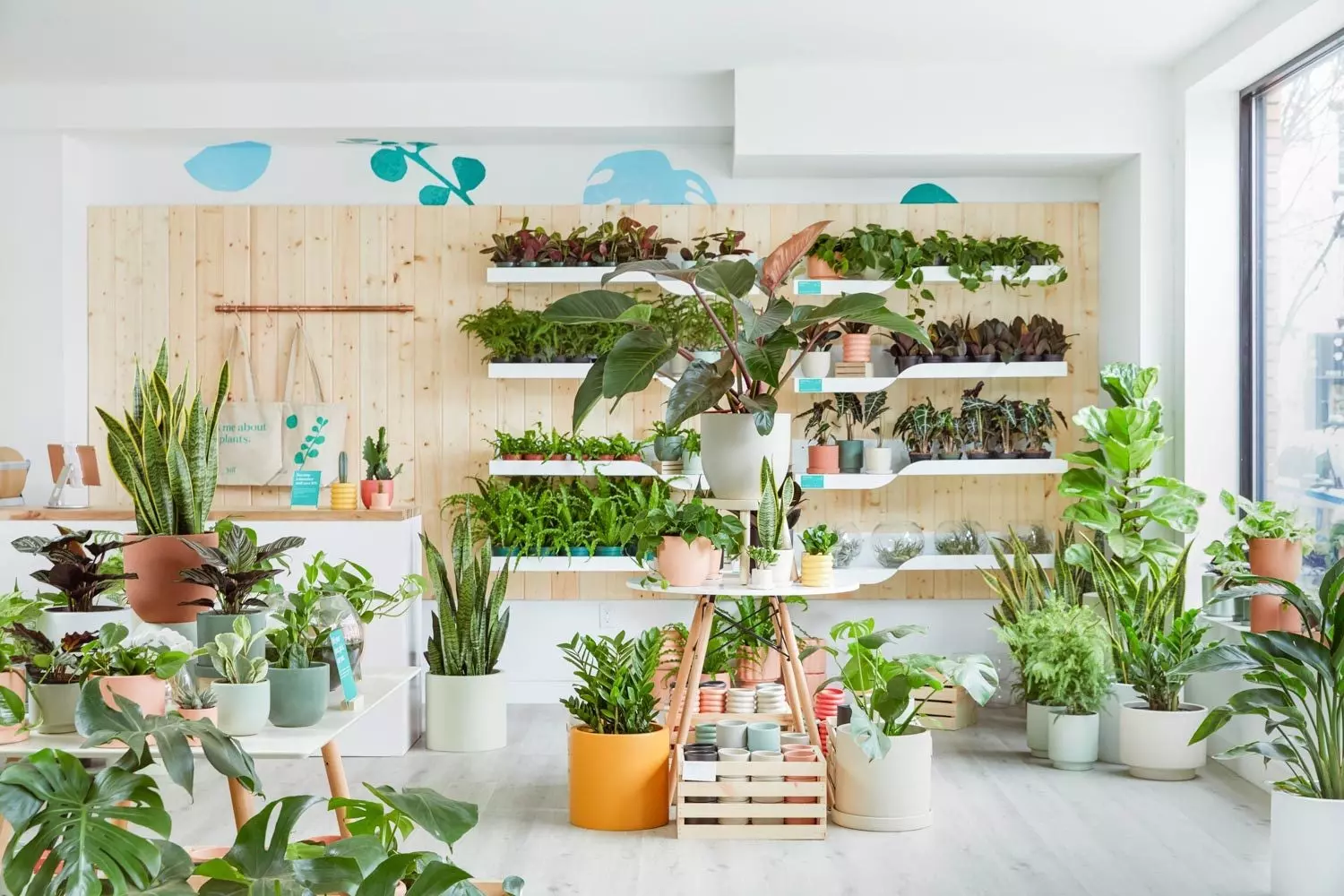 Caption: The Sill plants
Caption: The Sill plants
Outdoor Voices
Outdoor Voices, a popular athletic wear retailer, excels in creating engaging displays and incorporating local community elements. With spacious and well-designed stores, Outdoor Voices offers a comfortable and inviting environment for customers. They strategically place displays that encourage user-generated content and establish a connection to the local community. Vintage gym class-themed decor and interactive features add a unique touch to the overall retail design.
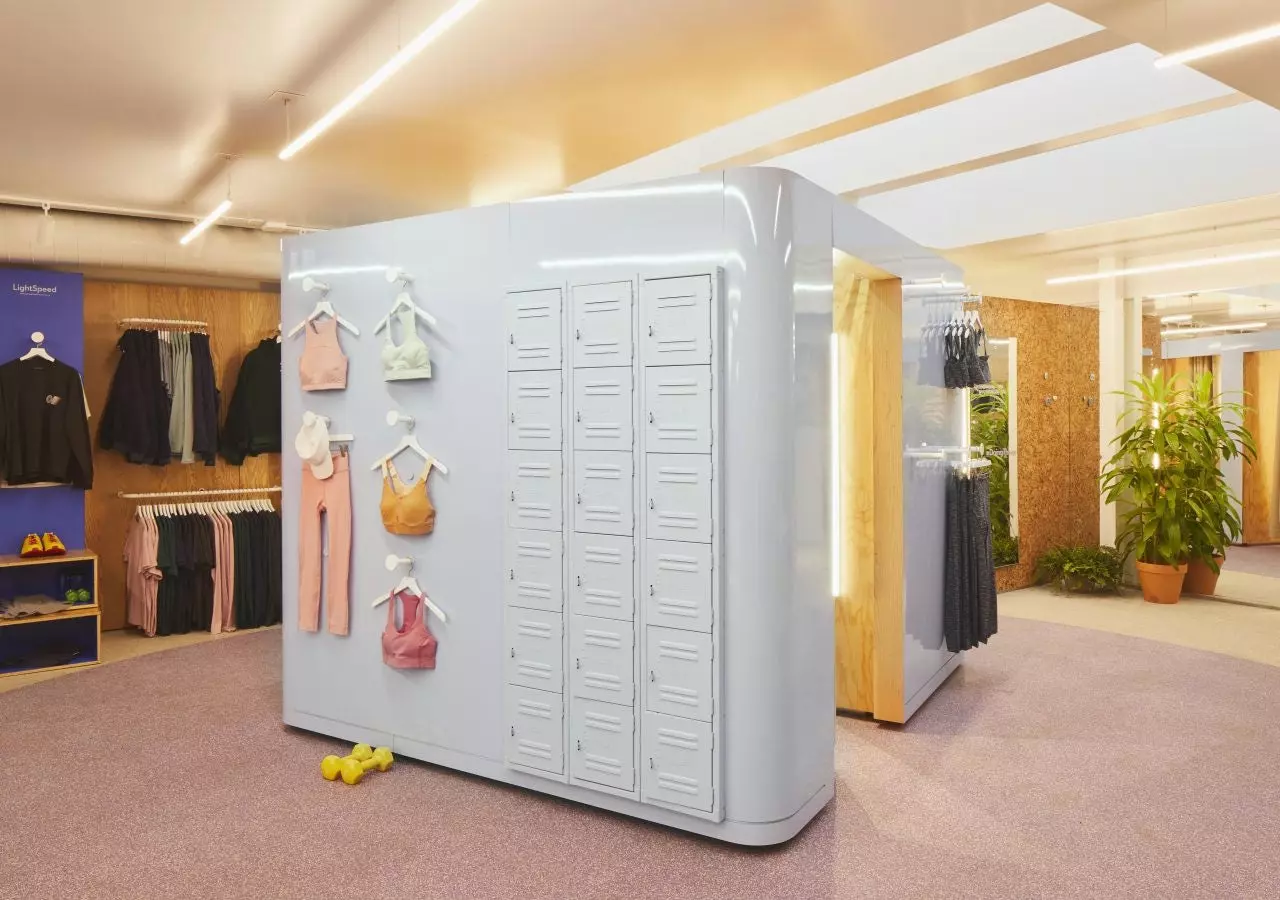 Caption: Dressing room lockers
Caption: Dressing room lockers
Wildling
Wildling, a shoe brand based in Germany, utilizes a minimalistic approach to retail interior design. The focus is on the shoes, with plenty of space for customers to browse and try on products. The design highlights the product's simplicity and functionality while incorporating engaging checkout displays that encourage additional purchases.
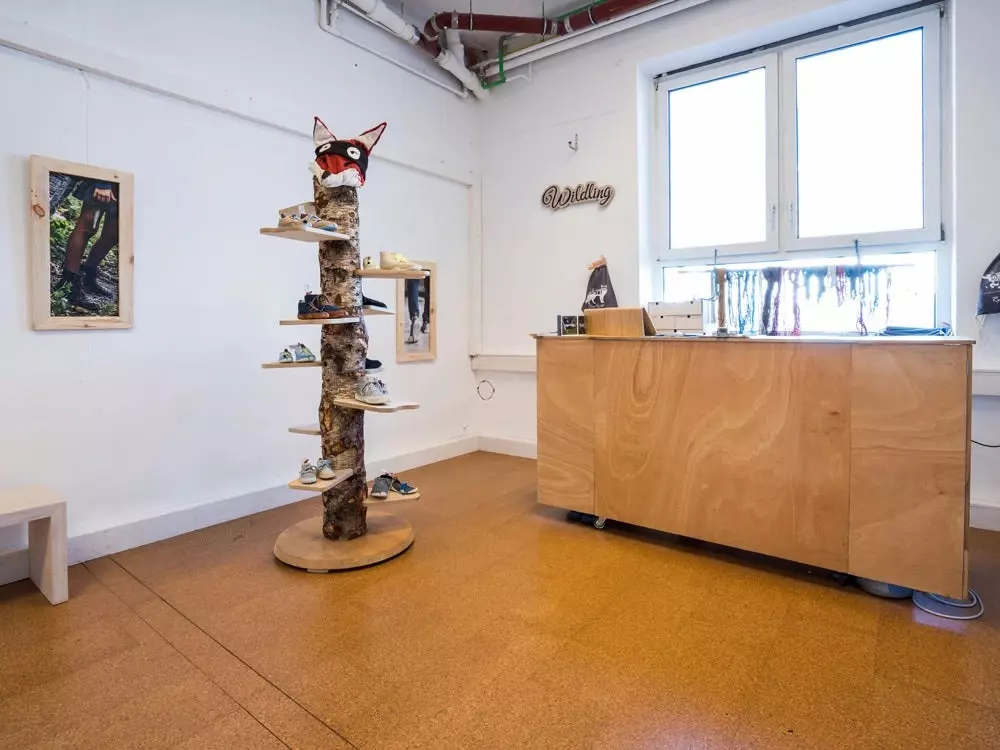 Caption: Wood flooring
Caption: Wood flooring
Moving Forward with Your Retail Design
Remember that retail design is an ongoing process. Continuously review and refine your retail space to create a customer journey and experience that resonates with your target audience. Seek feedback from your staff, friends, and family, and observe how customers interact with your store design. By implementing effective retail design principles and staying up to date with the latest trends, you can create an environment that attracts customers, enhances their shopping experience, and drives sales.









